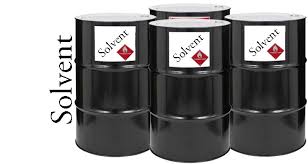EPA Issues Solvent Management Plan Guidance

The EPA has issued ‘best-practice’ guidance to assist licensees with the preparation of Solvent Management Plans (SMPs). Completion of a SMP is a specific requirement in some EPA licences and includes the following:
- Assessment of compliance with a specified total emission limit value;
- Assessment of compliance with a specified fugitive emission limit value;
- Identification of areas where reductions in solvent emissions may be achieved;
- Provision of information on solvent consumption, emissions and overall compliance;
- Assessment of compliance with the requirements of the reduction scheme.
A SMP is essentially a solvent mass balance which aims to account for all inputs and outputs of organic solvents for a given activity. Assessment of compliance according to the reduction scheme is not addressed in the guidance as it is infrequently used at EPA licensed sites.
The guidance aims to ensure that mass balance calculations are completed using an appropriate methodology to ensure that accurate and reliable information is provided to the EPA. The methodology used to quantify the various components of the mass balance equation must be clear, robust and auditable by the EPA. The guidance explains the various constituents of the mass balance calculations and provides guidance on where best to source the information in each case.
A key principle of the guidance is that rough estimates or approximations of the constituents (inputs and outputs) of the mass balance are no longer acceptable. In all cases, the guidance promotes the use of testing and measurement over estimations (e.g. design efficiency for a thermal oxidiser) and approximations of solvent content (e.g. solvent content of waste).
Where the solvent content of a product is not known, then the guidance requires that representative analyses of the material should be completed to determine solvent content. In scenarios where a range of solvent composition is indicated, as on a Material Safety Data Sheet for instance, then the guidance is to assume a worst-case scenario (i.e. use the maximum solvent content of the range).
The guidance also highlights the importance in understanding the relationship between the volume of material and its mass. For example, 1 litre of Methanol (CH3OH) has a mass of approximately 0.791 kg, while 1 litre of Chloroform (CHCl3) has a mass of 1.479 kg.
The full guidance document can be accessed through the link below. If you require assistance with the implementation of this guidance or the preparation of Solvent Management Plans, please give us a call.
Good Practice for Solvent Mass Balance and Fugitive Emission Assessments for EPA Licensed Sites
September 2017
